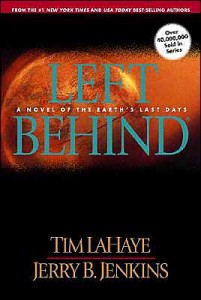 There’s a myth floating around in the Christian writing community that a Christian writer with a cultural, apologetic or evangelistic message can write a book that will reach both Christians and non-Christians. The approved term for this is “creating a crossover book.”
There’s a myth floating around in the Christian writing community that a Christian writer with a cultural, apologetic or evangelistic message can write a book that will reach both Christians and non-Christians. The approved term for this is “creating a crossover book.”
How did this myth develop? In the first place, Christian writers for years have been told their duty is to write books that will influence culture, that will introduce non-Christians to the reality of new life in Christ. This emphasis strengthened during the culture wars that intensified in the 1980s with the birth of the Moral Majority movement. If secular writers could influence society with books like The Grapes of Wrath, surely Christians ought to be able to do one better. After all, we have the Holy Spirit on our side.
Another contributor to the spreading of this myth was the success of Thomas Nelson with Christianity lite versions of material presented on Moody’s Radio Network by the Minirth/Meier team. This coincided with a broad emphasis on overcoming addictions of all kinds. By buying space in the entrance to mall secular bookstores Thomas Nelson exposed the public to these books and sold a lot of them. To my knowledge there was never a survey of who bought them—unbelievers or Christians who never shopped in independent Christian bookstores but were delighted to find a book with self-help written all over it in an accessible location. That success eventually fizzled, only to be reborn with John Maxwell’s books on leadership, developed while he was pastor of Skyline Wesleyan Church in the San Diego area. He transferred his knowledge of leadership into the secular business environment of San Diego, speaking at company events. At Here’s Life Publishers we acquired the first book to grow out of that outreach, Your Attitude. I convinced John that he needed to give me a stronger Christian version, more in keeping with what he taught his leadership team at Skyline Wesleyan. Your Attitude became the basis for a whole series of later books, carefully written with the secular reader in mind—and again extremely successful, leading to multiple Christianity lite titles on the New York Times bestseller list.
It’s a God thing.
 Then God intervened. Smashing through the barriers to overtly Christian books in the secular book market was the Left Behind series by Jerry Jenkins and Tim LaHaye. Skepticism about whether they would sell at Tyndale turned into euphoria as each successive book racked up sales in the millions. An article in Time magazine fueled the breakthrough, with ultimately even the New York Times bestseller list caving in and listing them. One after another climbed to the top, with the 11th in the series selling three million more copies in the first year after its release than any secular novel in the history of publishing.
Then God intervened. Smashing through the barriers to overtly Christian books in the secular book market was the Left Behind series by Jerry Jenkins and Tim LaHaye. Skepticism about whether they would sell at Tyndale turned into euphoria as each successive book racked up sales in the millions. An article in Time magazine fueled the breakthrough, with ultimately even the New York Times bestseller list caving in and listing them. One after another climbed to the top, with the 11th in the series selling three million more copies in the first year after its release than any secular novel in the history of publishing.
God was not done yet. For years Bruce Wilkinson, creator of Walk Through the Bible, had been preaching on the prayer of Jabez. He had written a major book on it that no one would publish. Egged on by Shirley Dobson, he agreed to let a writer tackle the topic, which David Kopp did—and turned out a 92-page book that conservative Christian publisher Multnomah saw skyrocket in sales to eight million the first year. Another Christian book had sold more copies the first year than any secular non-fiction book in history—by a cool three million.
That caught the attention of secular publishing house executives. When the buying spree subsided, they had acquired five Christian publishers to make sure they got in on the financial action. It also meant their secular editors did not have to deal with evangelical books—the line of demarcation was clear. If the book was overtly Christian, their Christian publishing subsidiaries published it. Their marketing people knew how to market it to the Christian public—but they also now had the resources to penetrate the secular marketplace. What Christian publishers soon discovered, however, that all is not roses in entering the secular market—the returns of unsold books are exponentially higher than returns from Christian bookstores, filling warehouse with unsold books. Multnomah became a casualty of that phenomenon. With several other factors contributing, they were forced to sell out to Random House, who already owned Waterbrook Press.
What crossed over?
But what became of the concept of crossover books? Did any books with only Christian principles and no overt Christian message rise to the top of the New York Times bestseller list? I stand to be corrected, but I am not aware of any. Instead, that book with a solid Christian message, The Purpose Driven Life, vaulted to the top of the bestseller lists and sold a cool 30 million copies—and Rick Warren became the darling of the secular media. Then 90 Minutes in Heaven, a sleeper for several years, exploded on the national scene and made the secular bestseller list. More books have followed, with Heaven is for Real the most recent entrant into the bestseller lists. No skimping on the Christian message in those books.
So how do you write a book that crosses over into the secular market and explodes on the national scene? First, I believe it is a God thing. When God feels the time is ripe for a crossover message, he creates it through truly unusual circumstances. Consider The Shack, by William P. Young—a book written for his family to illustrate the struggles he had gone through when abused in a school for missionary children. But for five friends, the book would never have gotten beyond the author’s family. And why should a book essentially on theology become a wildly successful crossover book? Only God knows—the author certainly did not write a Christianity lite book to try to get Barnes and Noble to sell it to unbelievers.
Or add Don Piper and Cec Murphey’s book 90 Minutes in Heaven. Sales were not exciting for several years until God intervened and turned it into a quintessential crossover book with a clear Christian message.
Yet what about the desire to reach the unbelievers? In the middle 70s I remember asking Robert DeVries, then editorial director at Zondervan, about the impact of The Late Great Planet Earth, released in 1970. Did Hal Lindsey present Christianity lite to entice the unsaved? Obviously not, but Bob DeVries told me they had 10,000 letters from unsaved who had accepted Christ because of reading the book. Sales eventually reached seven million copies.
Did Jerry Jenkins and Tim LaHaye present Christianity lite? Obviously not, yet a few years after the first book was released they had more than 5,000 letters from people who accepted Christ. A surprising number were atheists when given the first book, Left Behind.
So what makes a book sell so well it becomes a crossover book? Christians and non-Christians buying books for their friends, for neighbors. I helped man the sales table for The Purpose Driven Life at Grace Chapel in Lexington, MA during our small group emphasis on The 40 Days of Purpose. I saw person after person buy five books, ten books, all for friends and neighbors they wanted to introduce to Christ. And the wonderful stories of people coming to faith in Christ made all the effort worthwhile. A recent survey confirmed that the majority of books are either bought on recommendation or given away for a purpose. The best crossover book is one Christians love and give to relatives and friends. A survey will also show that all of them come to life through unusual experiences by Christians.

